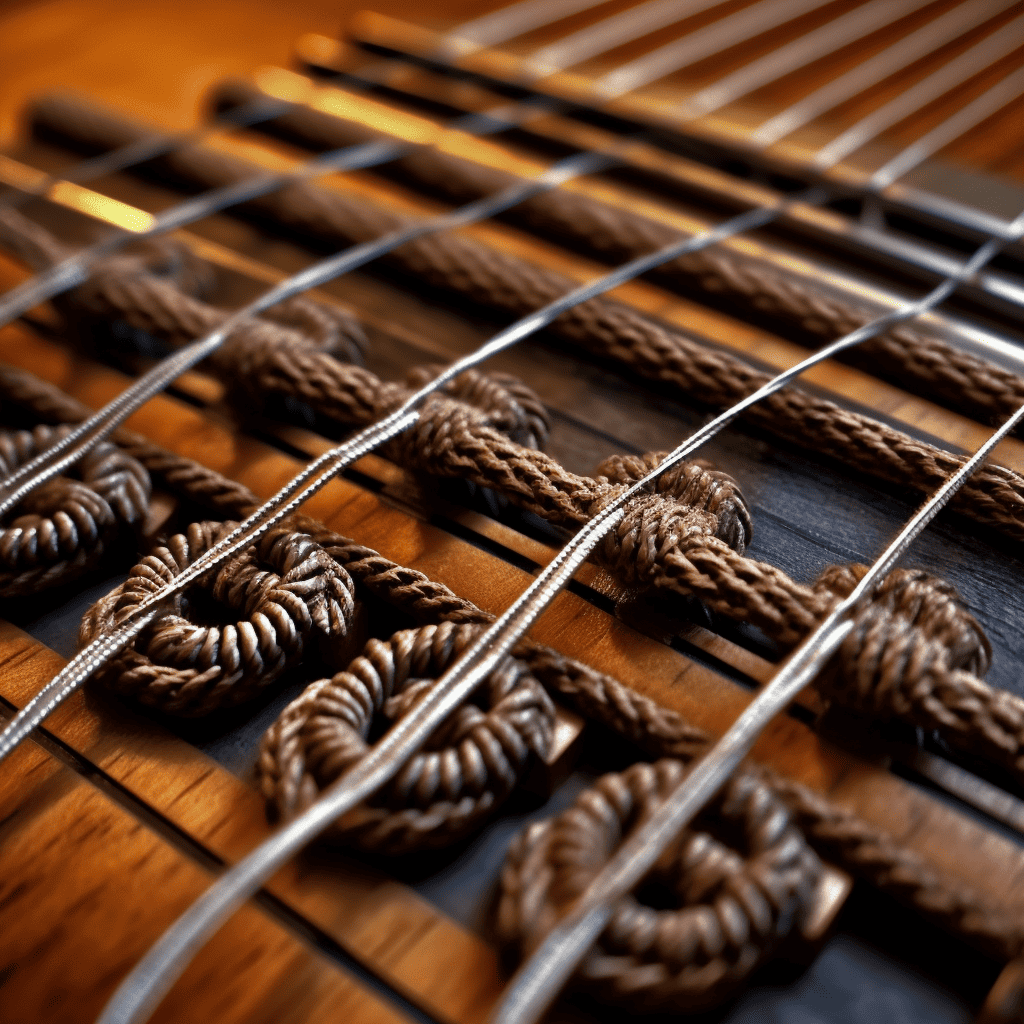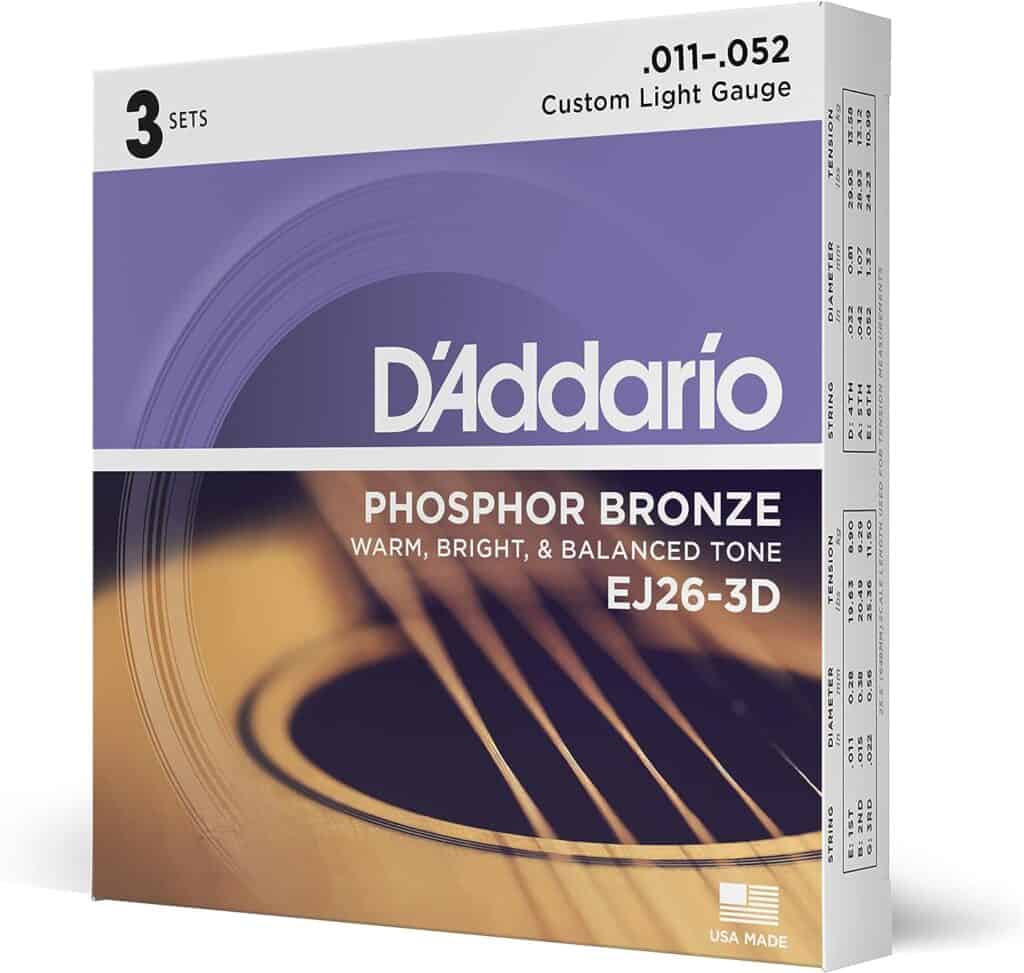Have you ever watched a concert and wondered why the guitarist’s strings were flailing about, uncut? It’s a sight that has intrigued many, leading to numerous debates and discussions amongst guitar enthusiasts. Let’s dive deep into this curious choice, unpacking the reasons and debunking some myths.
A Brief Overview

To the untrained eye, uncut guitar strings might just seem like a quirky fashion statement. But there’s more to it than meets the eye. From potential sustain benefits to mere time constraints, the reasons are quite varied. Each guitarist might have a unique reason, but we’ve compiled the most common ones to shed some light on this practice.
The Ever-Present Laziness Factor
No one’s perfect, right? We’ve all been lazy at times. For some, the prospect of restringing a guitar, with all its meticulousness, might be a tad overwhelming. Wiping off accumulated dirt, adjusting the length, and then tuning—it’s not a walk in the park. And after all that, snipping off the extra string might just seem like an unnecessary step.
When Time’s Not On Your Side
Imagine breaking a string right in the middle of an intense set. You have minutes, maybe even seconds, to replace it. Once the pressure’s off and the show’s over, the last thing on your mind is reaching for those wire cutters. After all, a rockstar’s life is pretty busy, and some things just get left undone.
Hoping for Better Sustain?

Every instrument, from the violin to the piano, has its share of myths and legends. For guitars, one of the most persistent myths is that uncut strings boost a guitar’s sustain. So, is there any truth to this belief? Let’s dive deeper.
The Theory Behind Uncut Strings and Sustain
The logic some guitarists rely on is that a longer string length (including the uncut portion) acts as an additional reservoir of energy. This extra energy is believed to maintain the vibration of the strings for a more extended period, leading to enhanced sustain.
Tension and Vibrations: The Heart of Sustain
Sustain is fundamentally about how long a string continues to vibrate after being plucked. The sustain depends on factors such as string tension, the material of the string, and how energy is transferred through the guitar. Tension plays a pivotal role. And where does this tension matter? Precisely between the peg and the bridge. The uncut excess beyond the tuning peg does not actively vibrate when the string is played and, thus, doesn’t contribute to the musical note or its sustain.
High-End Guitars and the Reality Check
If uncut strings truly made a difference in sustain, then professional guitarists, especially those performing in genres where sustain is critical (like rock ballads or blues), would consistently leave their strings uncut. Moreover, high-end guitars equipped with locking tuning pegs are the antithesis to this theory. These guitars allow strings to be locked into place without winding around the peg. They prove that excessive winding or leaving strings uncut doesn’t add any perceivable sustain. Many of these instruments, often expensive and used by top musicians, produce fantastic sustain without relying on uncut strings.
While it’s fun to explore different techniques and theories to enhance your guitar’s sound, it’s crucial to differentiate between fact and fiction. As far as sustain is concerned, focus on factors like string gauge, playing technique, and the guitar’s construction rather than the length of uncut strings.
Tuning Troubles
For guitar novices, getting that perfect pitch can be a challenge. Properly gauging string length for the right number of turns around a peg requires experience. It’s tempting for rookies to leave strings longer, thinking that they might need that extra length for adjustments later.
A Gear Setup Scenario
Ah, the Floyd Rose bridge! Familiar to many guitarists, this bridge requires strings to be of a certain length. In case of a string snap, having that extra length can come in handy, making the repair process smoother and faster.
Fear of The Poke
It’s a debate that never ends—does cutting strings increase the risk of painful pokes? Some players swear they’ve been injured more by sharp, short string ends, but the jury’s still out. What we do know is that long, uncut strings have been guilty of the occasional poke or scratch.
When You Lack the Tools
Those new to the guitar world might find themselves without the proper tools. As we mentioned, you need specific wire cutters to do the job. Scissors won’t cut it (pun intended). The strings, being made of tough materials like steel, nickel, or brass, demand the right tool for the job.
It’s Just Who They Are
Lastly, personality plays a significant role. A guitarist’s image is vital, and every little detail, including uncut strings, can be a part of their unique brand. For some, it’s just another way to stand out and make a statement.
The Role of Iconic Guitarists
Icons have always played a significant role in popularizing specific guitar habits. From Jimi Hendrix’s wild stage antics to B.B. King’s Lucille, every little detail can become legendary when adopted by a guitar great. Some famous guitarists have left their strings uncut, unintentionally endorsing the practice.
Safety First!

While there are numerous reasons for not trimming the strings, from a safety perspective, it’s generally a good idea to cut them. Not only does it prevent potential injuries, but it also gives your instrument a cleaner, more polished look.
Now, with all this newfound knowledge, the next time you see a guitarist with uncut strings, you can impress your friends with these insights. Maybe it’s a conscious choice, a rushed decision, or just plain forgetfulness. Whatever the reason, it’s undoubtedly an aspect of guitar culture that’s here to stay.
Is it an Acoustic vs. Electric Debate?
You might wonder if this practice varies between acoustic and electric guitars. Acoustic guitars, often being the choice for more intimate and softer performances, generally tend to have their strings trimmed for a neater appearance. Electric guitars, on the other hand, often seen in rock, punk, or metal environments, might lean towards the rugged, uncut look.
From Aesthetics to Essentials: String Length and String Type
While the choice of leaving strings uncut can often revolve around personal aesthetic preferences or practical reasons, the type of guitar string you choose plays an even more critical role in your guitar’s sound and playability. Beyond the length of the string, the material, gauge, and brand can shape your musical experience. Let’s shift our focus from the visual appeal and delve into how to select the perfect string set for your guitar.
Choosing the Right Guitar Strings

Every guitarist knows that the type of strings they use can dramatically influence their instrument’s tone and playability. But with the myriad of options out there, how does one pick the right set? Moreover, what are some of the best options available on the market? Let’s delve in.
Types of Guitar Strings
There are generally two categories of guitar strings: acoustic and electric. Within these categories, there are subsets based on materials and winding techniques.
- Acoustic Guitar Strings:
- Bronze: Known for their clear, ringing tone, but they may lose their brightness faster than other materials.
- Phosphor Bronze: Offers a warmer sound and lasts longer than bronze.
- Silk and Steel: They’re softer and gentler, ideal for fingerpicking.
- Electric Guitar Strings:
- Nickel-plated Steel: Popular for their balanced and clear tone.
- Pure Nickel: Provides a warmer, vintage tone.
- Stainless Steel: Resistant to corrosion and offers a bright sound.
Gauge Matters
The thickness or diameter of a string, known as its gauge, affects the tone and playability. Lighter strings are easier to play, making them great for beginners, while heavier strings provide a fuller tone and are often chosen by professional players.
Best Guitar Strings on the Market

- Ernie Ball Slinky: Whether you’re playing rock, jazz, or blues, the Ernie Ball Slinky strings, known for their balanced sound, have been a go-to for decades.
- D’Addario: Whether it’s their XL electric guitar strings or their Phosphor Bronze acoustic strings, D’Addario has been a staple in the industry for years. They’re known for durability and consistency.
- Elixir Nanoweb: The Elixir Nanoweb strings are coated, which means they last longer than most other brands. They’re perfect for players who don’t want to change strings often.
- Gibson Vintage Reissue: For those chasing a vintage sound, especially on older electric guitars, these pure nickel strings offer that classic vibe.
- Martin Lifespan: Known for their superior quality when it comes to acoustic guitars, Martin’s treated strings provide longer life without sacrificing tone.
The Bottom Line on Strings
While it’s essential to consider expert opinions and popular choices, the best way to find your preferred guitar string is through experimentation. Every guitarist’s touch, technique, and preference will differ, and thus, the ideal string will vary. Don’t be afraid to switch things up and try different brands and gauges until you find what resonates best with you.
Striking the Right Note: Strings and Personality
In the vast world of guitar playing, personal choices often define an artist’s unique style, whether it’s in the deliberate act of leaving strings uncut or in the meticulous selection of the right guitar strings. These decisions, driven by both practicality and personality, underline the individual journey of every musician. Whether you’re a seasoned pro or a budding guitarist, understanding the nuances behind these choices helps you craft a sound that’s unmistakably yours. So, the next time you see a guitarist with uncut strings or hear a tone that resonates deeply, remember: behind every choice is a story, a reason, and a passion. Embrace yours.
Frequently Asked Questions
Q1: Why do some guitarists prefer to leave their strings uncut?
A: There are various reasons, ranging from personal preferences like making a fashion statement to practical reasons such as not having the proper tools or being in a hurry during string replacement.
Q2: Does leaving guitar strings uncut affect the sound or playability?
A: No, the length of uncut strings beyond the tuning pegs doesn’t directly impact the sound or playability of the guitar. However, their movement might cause distractions or potentially poke the player.
Q3: Can regular scissors be used to cut guitar strings?
A: It’s not recommended. Guitar strings are made of metal alloys and can be quite tough. Proper wire cutters are ideal as they provide a clean cut and prevent any damage to the scissors.
Q4: How often should I replace my guitar strings?
A: It varies depending on how often you play and your playing style. Typically, with regular play, every 3-6 months is a good timeframe. However, if you play intensely or frequently, you might need to change them more often.
Q5: Does the brand of guitar strings really make a difference?
A: Yes, different brands use various materials and manufacturing techniques that can influence the tone, playability, and longevity of the strings.
Q6: Is there a difference between acoustic and electric guitar strings?
A: Absolutely! Acoustic strings are typically thicker and made of materials like bronze or phosphor bronze. In contrast, electric guitar strings are made of materials like nickel or steel and are designed to interact with the guitar’s pickups.
Q7: What are “coated” guitar strings?
A: Coated strings have a thin layer of polymer or another material applied to them. This coating helps in reducing the buildup of dirt, sweat, and oils from the player’s fingers, potentially extending the life of the strings.
Q8: Can uncut strings cause damage to the guitar or its case?
A: While uncut strings themselves won’t typically damage the guitar, their sharp ends could potentially scratch the finish or the interior of a guitar case if not handled with care.
Q10: Are there any famous guitarists known for leaving their strings uncut?
A: Yes, several well-known guitarists have been spotted with uncut strings on occasion, though it’s not always a consistent style choice. Observant fans might catch a glimpse during live performances or in candid photographs. Remember, the reasons can be as varied as the guitarists themselves!
